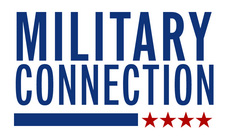VETERAN STAND DOWN INFORMATION
Click here to access the list of current Stand Downs.
What is a Stand Down?
In times of war, exhausted combat units requiring time to rest and recover were removed from the battlefields to a place of relative security and safety. At secure base camp areas, troops were able to take care of personal hygiene, get clean uniforms, enjoy warm meals, receive medical and dental care, mail and receive letters, and enjoy the camaraderie of friends in a safe environment.
Today, Stand Down refers to a grassroots, community-based intervention program designed to help the nation’s estimated 107,000 homeless veterans on any given night “combat” life on the streets. Homeless veterans are brought together in a single location for one to three days and are provided access to the community resources needed to begin addressing their individual problems and rebuilding their lives. In the military, Stand Down afforded battle-weary soldiers the opportunity to renew their spirit, health and overall sense of well-being. Today’s Stand Down affords the same opportunity to homeless veterans.
What is the history of Stand Down?
The concept of Stand Down, as related specifically to the homeless veteran crisis, was the brainchild of two Vietnam Veterans, Robert Van Keuren and Dr. Jon Nachison, with the support of Vietnam Veterans of San Diego. The first Stand Down was held in San Diego during the summer of 1988. The popularity of the event has steadily grown from the original in 1988 to 190 throughout the nation each year. It is estimated that in 2009 alone more than 42,000 homeless veterans received assistance at Stand Downs.
What happens at a Stand Down?
Hundreds of homeless veterans are provided with a broad range of necessities including food, clothing, medical, legal and mental health assistance, job counseling and referral, and most importantly, companionship and camaraderie. It is a time for the community to connect with the homeless veteran population and address this crisis that affects each and every town, city and state in this country. The hand up — not a handout — philosophy of Stand Down is carried out through the work of hundreds of volunteers and organizations throughout the nation.
Why this unique approach?
Many homeless veterans have suffered years of chronic or recurring readjustment issues since ending their military service, issues often inadequately addressed by traditional services to assist veterans. This is due in part to a lack of structured and effective collaboration among agencies, forcing veterans to go from one agency to another in efforts to access the various resources they need.
This lack of efficient support from traditional veteran services has led to homeless veterans’ mistrust of the very government agencies and large institutions created to help them. A Stand Down brings together various agencies and service providers to provide a comprehensive system that encourages and assists homeless veterans to overcome their distrust and feelings of isolation with the knowledge that this event promises to address multiple problems at one time and place. It provides a safe environment in which they can connect with people who have shared experiences and cultivate hope that they can rebuild their lives.
Who organizes and delivers theses services?
Hundreds of caring volunteers and professionals give of their time and expertise to address the unique needs of homeless veterans. Committees formed specifically to put on the event stage most Stand Downs. Veteran service organizations, National Guard and Reserve units, homeless shelter programs, health care providers, U.S. Department of Veterans Affairs and Labor staffs, veteran-helping-veteran programs, and concerned citizens from the community organize and stage the events.
Where are Stand Downs held?
Stand Downs most often occur over a two- or three-day period, although there are an increasing number of one-day events. Some are held indoors, but the majority are held on football fields, in parks or other wide-open spaces. There is a list of upcoming Stand Downs on this site.
What does it take to stage a Stand Down?
There is no specific formula to plan and hold a Stand Down. In fact, each community adds its own uniqueness to a Stand Down. Some offer basic services, while others offer more by including entertainment and cultural activities to their programs. Some Stand Downs are re-created to follow a regimented, military-style program, which is familiar and comforting to the veteran, while others create an atmosphere of empowerment to the extent of electing officers among the homeless veterans.
All it really takes for a community to organize a Stand Down is a group of dedicated volunteers committed to helping homeless veterans improve their situation.
What can I do to help?
Your contribution or volunteer time would be greatly appreciated by the local Stand Down committee. The National Coalition for Homeless Veterans maintains an active list of scheduled Stand Downs across the nation, including contact information.
If there is not a Stand Down scheduled in a community near you, you might want to help organize a planning committee to assist the homeless veterans in your area. Please contact us for information concerning homeless veteran providers and advocates in your area.
Classification of Stand Down Events
In July 2002, the founders of Stand Down, Robert Van Keuren, Dr. Jon Nachison and Vietnam Veterans of San Diego, asked the National Coalition for Homeless Veterans (NCHV) to become the “keeper of the flame” and provide national leadership for the Stand Down movement. Since the first Stand Down in San Diego in 1988, the program has become recognized as the most valuable outreach tool to help homeless veterans in the nation today.
NCHV has developed standards for classification of Stand Down events based on the different models currently in practice. Variations from the original program concept – in terms of duration and the range of support services available – shape the developed program guidelines.
Stand Down program guidelines can be a valuable planning tool for event organizers. Though not every event will include all of the service elements required for official designation as a “Stand Down,” it is generally agreed that all outreach and assistance programs provide much needed support for homeless veterans. The hope is that event coordinators will endeavor to include more services as their programs evolve.
Classifications
Homeless veterans outreach assistance events are classified based on comparison to the original, three-day comprehensive Stand Down program concept. Event organizers have the latitude to name their own events. NCHV’s classifications will be used to inform potential investors and collect information about types of services offered to homeless veterans. Guidelines for classifying homeless veteran assistance programs follow.
Stand Down
| Time period: |
3-day event (minimum) |
| Participants: |
Homeless veterans and their families/significant others only |
| Services provided: |
Shelter provided throughout event; food; personal care (haircuts, personal care supplies, clothing); picture ID services; health care screening (HIV/AIDS, TB, Hepatitis C, etc.); health care services (actual health care professionals will provide services); eye care; dental care; VA benefits counseling; general benefits counseling (Social Security, Food Stamps, local health and human services); substance abuse counseling/recovery groups; mental health counseling; legal services; employment services (job referrals, employment counseling); housing services (referrals to programs); spiritual services; activities to empower homeless veterans and create a “community” (town meetings, tent leaders, open mike, entertainment, graduation) |
Homeless Veterans Resource Fair (Modified Stand Down model)
| Time period: |
1- or 2-day events |
| Participants: |
Homeless veterans and their families/significant others only |
| Services provided: |
Shelter provided throughout event; food; personal care (haircuts, personal care supplies, clothing); picture ID services; health care screening (HIV/AIDS, TB, Hepatitis C, etc.); health care services (actual health care professionals will provide services); eye care; dental care; VA benefits counseling; general benefits counseling (Social Security, Food Stamps, local health and human services); substance abuse counseling/recovery groups; mental health counseling; legal services; employment services (job referrals, employment counseling); housing services (referrals to programs) |
Homeless Veteran Health Fair
| Time period: |
1-day events |
| Participants: |
Homeless veterans |
| Services provided: |
Health care screening (HIV/AIDS, TB, Hepatitis C, etc.); health care services (actual health care professionals will provide services); eye care services or referral; dental care services or referral; VA benefits counseling or referral; general benefits counseling or referral (Social Security, Food Stamps, local health and human services); substance abuse counseling/recovery groups; mental health counseling or referral; housing services (referrals to programs) |
Homeless Veteran Job Fair
| Time period: |
1-day events |
| Participants: |
Homeless veterans |
| Services provided: |
VA benefits counseling; general benefits counseling (Social Security, Food Stamps, local health and human services); employment services (job referrals, employment counseling); housing services (referrals to programs) |
Other events
Events targeting all veterans are really benefit or health screening fairs and do not fit the Stand Down model criteria.
Some communities have used the Stand Down model to offer services to all homeless individuals and/or low income at-risk individuals. Since these are not veteran specific, they do not fit the Stand Down model.
Organizing a Stand Down
Veteran service organizations and homeless veteran activists around the country have organized over a thousand Stand Downs since 1988, implemented with the assistance of hundreds of service providers and thousands of volunteers. The success of your Stand Down hinges upon its effective organization, built around the practice of a coordinated community effort. In this effort, individuals, organizations and government agencies create and strengthen community partnerships to maximize homeless veterans’ access to a variety of resources to address identified needs.
Vietnam Veterans of San Diego has identified six goals to organizing and implementing a successful Stand Down:
- Provide homeless veterans immediate relief from the trauma and isolation of homelessness. Create an environment where basic necessities are provided and participants can come together in a safe and relaxed atmosphere.
- Provide homeless veterans access to short-term resources. Ensure that participants have easy access to basic needs during the event, including shelter, beds, food, showers, clothing and haircuts.
- Provide homeless veterans access to long-term resources and providers. Give participants the opportunity to begin drug and alcohol recovery, get medical and dental treatment, receive employment counseling and referrals, access social services information, deal with legal matters, etc.
- Raise community awareness about homelessness (particularly homeless veterans). Encourage participation of elected officials in Stand Down. Increase media coverage and dialogue on homeless veteran issues.
- Replicate the Stand Down event in other areas. Bring in service providers from other areas to observe and participate in a Stand Down so they can use that experience to launch a program in their communities.
- Develop longer-term solutions to address the needs of homeless veterans. Involve as many service providers and volunteers in your Stand Down event as possible, and use that collaboration to develop an assistance network in your community.
Ingredients Critical to Stand Down Success
Planning your first Stand Down can take a year or longer. Don’t be discouraged if you encounter difficulties along the way. Perseverance is key to raising the level of community awareness and building a foundation of community support for this event. You also need to be flexible. Planning volunteer-organized events often involves facing unanticipated obstacles or challenges, and you may need to do some quick thinking or make changes along the way.
A high level of community awareness and commitment is vital to the success of a Stand Down and should be identified as a principal goal throughout the planning process. Strong leadership from the initial planning stages is essential to achieving this objective. Grassroots veterans groups or service organizations often serve in leadership roles during the planning process. Local Department of Veterans Affairs and other government agencies also successfully provide leadership.
Raising community awareness and commitment requires an accurate needs assessment for homeless veterans within the community, as well as an assessment of community capacity and available resources. This information will help you determine the appropriate length and service demands of your event.
Effective planning should be based on the completed needs assessment. Effective planning includes organization of the event, coordination of efforts, and creation of an information clearinghouse that serves as a liaison to the public and that can help ensure delivery of a consistent message for the project.
10 Steps to Organizing Stand Down Events
The steps outlined below provide a brief introduction to the fundamentals of organizing an event. (See Vietnam Veterans of San Diego’s “Stand Down Guide” for detailed guidance on organizing and implementing a Stand Down). Note that these steps often overlap or are undertaken simultaneously. Also, certain steps are meant to be initiated early and carried out throughout the organization process.
- Begin by identifying leadership for the planning process. Efforts to plan an event generally begin with individuals who are familiar with Stand Down, whether through observing a Stand Down elsewhere or by watching a VVSD Stand Down video. It is important that one or two people are selected to be involved in a leadership role throughout the planning stages and event implementation. Think about targeting community-based veteran service providers, local VVA chapter or other veteran service organizations in your area, or your local DVA office to identify individuals who could fill this role. You could also consult your local County Veterans Service Officer to identify strong, active veteran advocates in the area.
- Once leadership has been established, assess the need for a Stand Down in your community. Assess the number and needs of homeless veterans in your area. Check with County Veterans Service Officer, your local DVA and other local government agencies for statistical information. Check with local shelters and homeless service providers to determine the resources most frequently accessed or requested. Do outreach to homeless veterans on the street to get their input to determine the services that are accessed and desired.
- Gauge community support for a Stand Down. It is necessary that a community understand what a Stand Down is before you ask for support. Organize group briefings or Stand Down video screenings for broad community representation, including elected officials, service providers, media and others. You may find that these events also provide an opportunity for you to identify individuals who are interested in participating on the steering committee (see step 4).
- Identify major service providers and other community leaders and form a Steering Committee that meets regularly to provide direction and oversight throughout the planning process. The committee typically includes leaders of important local organizations, businesses and key players who have personal connections that may assist in accessing resources and building community support. The steering committee works closely with the lead agency (see step 6) and regularly conducts general service provider meetings. Stand Down has been declared a priority by many Veteran Service Organizations, so consider tapping these agencies for advocates who are eager to participate and who understand veterans’ issues.
- Determine the scope of the event and set the date. Determine number of days, service providers, volunteers needed, what food and housing will be provided, and the number of homeless veterans and their families that you can accommodate. You will have to consider local government restrictions, fire and health codes, site capacity, accessibility, security, and the resources available to support the event. When setting the date, consider weather (the mild season is best), availability of volunteers and service providers, and the needs of site owners, service providers and volunteers.
- Establish a lead agency and information center at least six months before you would like to hold the event. Ideally, this agency is one that works directly with homeless veterans on a daily basis and has an understanding of homeless veterans’ issues. Although the lead agency will work closely with the steering committee (agency personnel may serve as key committee members), the agency holds primary responsibility for organizing and implementing the Stand Down. An information center should be organized early on, through which personnel will prepare and distribute print materials, respond to questions and keep records of participating service providers and volunteers.
- Once you have completed an assessment of services needed, understand what resources will be available for the event, and have established leadership, you can begin working to locate potential Stand Down sites. The type of event to be held is the first factor to consider in determining an appropriate site. Many other factors must also be considered, including site accessibility, security, identification controls, acceptance by surrounding community, indoor or outdoor location and costs.
- Develop a preliminary budget and think about materials needed, based on the services you want to provide. Remember, your goal is to plan and implement this event through donations of time, goods and services. Fundraising and donation solicitation are crucial to offsetting certain core costs. Military organizations often provide much of the necessary equipment (tents, cots, trucks, medical equipment, etc.). They may also provide the core labor for site set-up and tear-down, as well as ensure site security. Think about contacting veteran service organizations and government agencies for donations and assistance. Be creative. Get ideas by talking to individuals who have raised funds and donations for Stand Downs in other areas.
- Coordinate program and logistics planning and consider key services to be provided at the event. Strategize the planning of the event program and logistics. This can be done in a variety of ways. VVSD in San Diego has identified two individuals from the steering committee to serve as program and logistics directors. The two positions work closely to plan each day’s events. A program director designs a program of events, including scheduling and coordination of services, and selecting and training leaders. A logistics director assesses overall Stand Down needs and coordinates all material acquisition and distribution, site preparedness and security.Services will include both basic services and program services. Basic services are those that provide personal hygiene and safety — food, clothes, showers, haircuts, shelter and site security. Program services include medical care (treatment for chronic conditions, screening for TB and STDs); dental care; mental health and substance abuse counseling; legal aid (such as the Homeless Court Program); assistance with benefits; and employment assistance.
- Raise awareness about the event. Select a public relations director from the steering committee or lead agency and organize a publicity campaign several months prior to the event. You will need to begin outreach to homeless veterans about six weeks before the Stand Down. Homeless veterans should be pre-registered for the event, if possible, to evaluate potential attendance and services needed as well as allow time for court files to be pulled for participation in the Homeless Court program, if offered.[The Homeless Court is a special court session held outside of the courtroom, often in a shelter or at a Stand Down site, through which homeless defendants can resolve misdemeanor offenses and warrants with a plea structure adapted to their involvement in homeless assistance and recovery programs.]
Who are homeless veterans?
The U.S. Department of Veterans Affairs (VA) states the nation’s homeless veterans are predominantly male, with roughly five percent being female. The majority of them are single; come from urban areas; and suffer from mental illness, alcohol and/or substance abuse, or co-occurring disorders. About one-third of the adult homeless population are veterans.
America’s homeless veterans have served in World War II, the Korean War, Cold War, Vietnam War, Grenada, Panama, Lebanon, Afghanistan and Iraq (OEF/OIF), and the military’s anti-drug cultivation efforts in South America. Nearly half of homeless veterans served during the Vietnam era. Two-thirds served our country for at least three years, and one-third were stationed in a war zone.
Roughly 56 percent of all homeless veterans are African American or Hispanic, despite only accounting for 12.8 percent and 15.4 percent of the U.S. population respectively.
About 1.5 million other veterans, meanwhile, are considered at risk of homelessness due to poverty, lack of support networks, and dismal living conditions in overcrowded or substandard housing.
How many homeless veterans are there?
Although flawless counts are impossible to come by – the transient nature of homeless populations presents a major difficulty – VA estimates that 107,000 veterans are homeless on any given night. Over the course of a year, approximately twice that many experience homelessness. Only eight percent of the general population can claim veteran status, but nearly one-fifth of the homeless population are veterans.
Why are veterans homeless?
In addition to the complex set of factors influencing all homelessness – extreme shortage of affordable housing, livable income and access to health care – a large number of displaced and at-risk veterans live with lingering effects of post-traumatic stress disorder (PTSD) and substance abuse, which are compounded by a lack of family and social support networks.
A top priority for homeless veterans is secure, safe, clean housing that offers a supportive environment free of drugs and alcohol.
Although “most homeless people are single, unaffiliated men… most housing money in existing federal homelessness programs, in contrast, is devoted to helping homeless families or homeless women with dependant children,” as is stated in the study “Is Homelessness a Housing Problem?” (Understanding Homelessness: New Policy and Research Perspectives, Fannie Mae Foundation, 1997).
Doesn’t VA take care of homeless veterans?
To a certain extent, yes. VA’s specialized homeless programs served more than 92,000 veterans in 2009, which is highly commendable. This still leaves well over 100,000 more veterans, however, who experience homelessness annually and must seek assistance from local government agencies and community- and faith-based service organizations. In its November 2007 “Vital Mission” report, the National Alliance to End Homelessness estimated that up to about half a million veterans have characteristics that put them in danger of homelessness. These veterans may require supportive services outside the scope of most VA homeless programs.
Since 1987, VA’s programs for homeless veterans have emphasized collaboration with such community service providers to help expand services to more veterans in crisis. These partnerships are credited with reducing the number of homeless veterans by more than halfover the past six years. More information about VA homeless programs and initiatives can be found here.
What services do veterans need?
Veterans need a coordinated effort that provides secure housing, nutritional meals, basic physical health care, substance abuse care and aftercare, mental health counseling, personal development and empowerment. Additionally, veterans need job assessment, training and placement assistance.
NCHV strongly believes that all programs to assist homeless veterans must focus on helping them obtain and sustain employment.
What seems to work best?
The most effective programs for homeless and at-risk veterans are community-based, nonprofit, “veterans helping veterans” groups. Programs that seem to work best feature transitional housing with the camaraderie of living in structured, substance-free environments with fellow veterans who are succeeding at bettering themselves.
Government money, while important, is currently limited, and available services are often at capacity. It is critical, therefore, that community groups reach out to help provide the support, resources and opportunities most Americans take for granted: housing, employment and health care. Veterans who participate in collaborative programs are afforded more services and have higher chances of becoming tax-paying, productive citizens again.
What can I do?
- Determine the need in your community. Visit with homeless veteran providers. Contact your mayor’s office for a list of providers, or search the NCHV database.
- Involve others. If you are not already part of an organization, align yourself with a few other people who are interested in attacking this issue.
- Participate in local homeless coalitions. Chances are, there is one in your community. If not, this could be the time to bring people together around this critical need.
- Make a donation to your local homeless veteran provider.
- Contact your elected officials. Discuss what is being done in your community for homeless veterans.
Veterans Facts
DEFINITIONS, DEMOGRAPHICS AND ESTIMATED NUMBERS
What is the definition of homeless?
The United States Code contains the official federal definition of homelessness, which is commonly used because it controls federal funding streams. In Title 42, Chapter 119, Subchapter 1, “homeless” is defined as:
§11302. General definition of homeless individual
(a) In general
For purposes of this chapter, the term “homeless” or “homeless individual or homeless person” includes–
- an individual who lacks a fixed, regular, and adequate nighttime residence; and
- n individual who has a primary nighttime residence that is––
- a supervised publicly or privately operated shelter designed to provide temporary living accommodations (including welfare hotels, congregate shelters, and transitional housing for the mentally ill);
- an institution that provides a temporary residence for individuals intended to be institutionalized; or
- a public or private place not designed for, or ordinarily used as, a regular sleeping accommodation for human beings
Who is a veteran?
In general, most organizations use the U.S. Department of Veterans Affairs (VA) eligibility criteria to determine which veterans can access services. Eligibility for VA benefits is based upon discharge from active military service under other than dishonorable conditions. Benefits vary according to factors connected with the type and length of military service. To see details of eligibility criteria for VA compensation and benefits, view the current benefits manual here.
Demographics of homeless veterans
“The Forgotten Americans-Homelessness: Programs and the People They Serve” – released Dec. 8, 1999, by the U.S. Interagency Council on the Homeless (USICH) – is the National Survey of Homeless Assistance Providers and Clients (NSHAPC), which was completed in 1996 and updated three years later. You can download the NSHAPC reports at www.huduser.org.
Veteran-specific highlights from the USICH report include:
- 23% of the homeless population are veterans
- 33% of the male homeless population are veterans
- 47% served Vietnam-era
- 17% served post-Vietnam
- 15% served pre-Vietnam
- 67% served three or more years
- 33% were stationed in war zone
- 25% have used VA homeless services
- 85% completed high school/GED, compared to 56% of non-veterans
- 89% received an honorable discharge
- 79% reside in central cities
- 16% reside in suburban areas
- 5% reside in rural areas
- 76% experience alcohol, drug or mental health problems
- 46% are white males, compared to 34% of non-veterans
- 46% are age 45 or older, compared to 20% non-veterans
Service needs cited include:
- 45% need help finding a job
- 37% need help finding housing
How many homeless veterans are there?
Accurate numbers community-by-community are not available. Some communities do annual counts; others do an estimate based on a variety of factors. Contact the closest VA medical center’s homeless coordinator, the office of your mayor, or another presiding official to get local information.
A regional breakdown of numbers of homeless veterans, using data from VA’s 2009 CHALENG (Community Homelessness Assessment, Local Education and Networking Groups) report – which contains the most widely cited estimate of the number of homeless veterans – can be found here.
Incarcerated Veterans
In May 2007, the Bureau of Justice Statistics released a special report on incarcerated veterans. The following are highlights of the report, “Veterans in State and Federal Prison, 2004,” which assessed data based on personal interviews conducted in 2004:
Numbers and profiles
- There were an estimated 140,000 veterans held in state and federal prisons. State prisons held 127,500 of these veterans, and federal prisons held 12,500.
- Male veterans were half as likely as other men to be held in prison (630 prisoners per 100,000 veterans, compared to 1,390 prisoners per 100,000 non-veteran U.S. residents). This gap had been increasing since the 1980s.
- Veterans in both state and federal prison were almost exclusively male (99 percent).
- The median age (45) of veterans in state prison was 12 years older than that of non-veterans (33). Non-veteran inmates (55 percent) were nearly four times more likely than veterans (14 percent) to be under the age of 35.
- Veterans were much better educated than other prisoners. Nearly all veterans in state prison (91 percent) reported at least a high school diploma or GED, while an estimated 40 percent of non-veterans lacked either.
Military backgrounds
- The U.S. Army accounted for 46 percent of veterans living in the United States but 56 percent of veterans in state prison.
- In 2004, the percentage of state prisoners who reported prior military service in the U.S. Armed Forces (10 percent) was half of the level reported in 1986 (20 percent).
- Most state prison veterans (54 percent) reported service during a wartime era, while 20 percent saw combat duty. In federal prison two-thirds of veterans had served during wartime, and a quarter had seen combat.
- Six in 10 incarcerated veterans received an honorable discharge.
Mental health
- Veteran status was unrelated to inmate reports of mental health problems.
- Combat service was not related to prevalence of recent mental health problems. Just over half of both combat and non-combat veterans reported any history of mental health problems.
- Veterans were less likely than non-veteran prisoners to have used drugs. Forty-two percent of veterans used drugs in the month before their offense compared to 58 percent of non-veterans.
- No relationship between veteran status and alcohol dependence or abuse was found.
Convictions and sentencing
- Veterans had shorter criminal histories than non-veterans in state prison.
- Veterans reported longer average sentences than non-veterans, regardless of offense type.
- Over half of veterans (57 percent) were serving time for violent offenses, compared to 47 percent of non-veterans.
- Nearly one in four veterans in state prison were sex offenders, compared to one in 10 non-veterans.
- Veterans were more likely than other violent offenders in state prison to have victimized females and minors.
- More than a third of veterans in state prison had maximum sentences of at least 20 years, life or death.
|

















